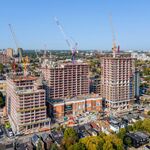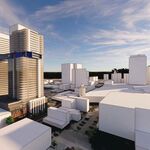Dan416
Senior Member
Although many many years away, it would make far greater sense to keep the DRL away from Union (at least as far north as Queen). I say this because this line would directly serve the downtown core and the major towers. I get off at St. Andrew and I can tell you very few people continue on to Union during the morning rush (same goes for Yonge Line). We have to keep in mind that people are lazy, and if the DRL were to go under union or connect to union, I'd say quite a few people would make that transfer.
While Union Station has capacity (how much who knows) why not spread the load out and provide several dense connecting points (Yonge-Bloor, Bloor-St. George, Yonge-Queen/King, Union). The majority of people that use the PATH heading north from Union Station are not TTC users, rather GO, VIA, etc. Combine this with (hopefully) a new East/West Queen's Quay LRT and there could be several good options to get downtown:
Local: Streetcars (College, Dundas, Queen, King, Queen's Quay), In-Town: YUS, BD and DRL subways, Commuter: GO, VIA
I disagree wholeheartedly. Take the DRL where people want to go and where they can transfer easily to other modes of transit.
A DRL that skips Union isn't even worth building IMHO.




